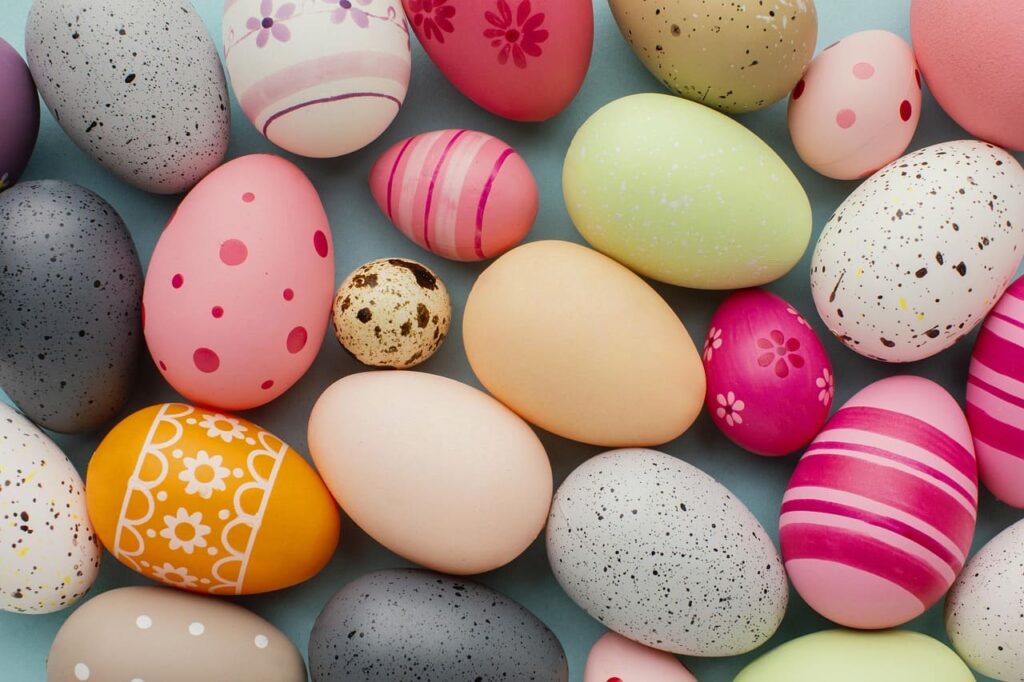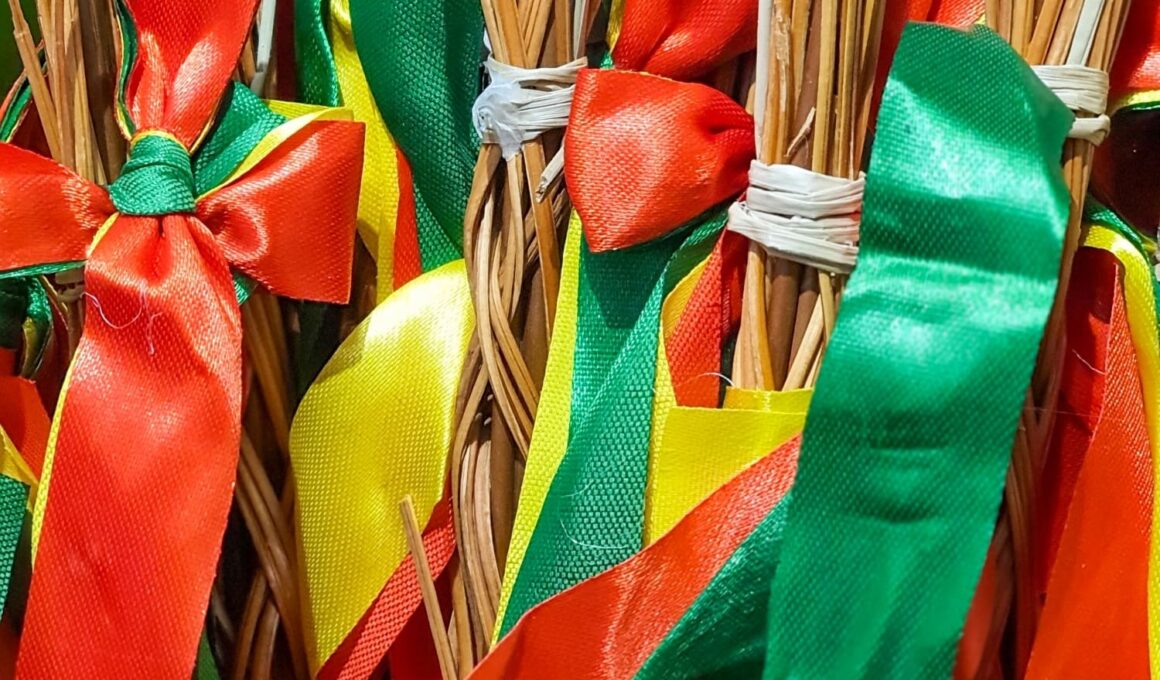Table of contents Show
While you might associate Easter with bunnies and chocolates, in the Czech Republic, the Easter tradition of whipping young women is the way to go.
The Czechs have traditionally defined the roles of men and women in Czech society. But when it pertains to customs like Easter celebrations, the Czechs prefer to keep things simple.
But why do the Czechs whip girls on Easter Monday?
The Czech republic Easter whipping, popularly known as Pomlázka among the locals, is perhaps the most widely recognized Easter custom.
You can recognize the Czech republic Easter whip by its distinctive braided design and the vibrantly coloured ribbons that adorn its tip.
Women are whipped with this on Easter Monday morning to maintain their fertility, beauty, and health throughout the year.
According to a 2019 survey, the Czech republic tradition of whipping on Easter Monday is still practiced in roughly 60% of Czech households. Isn’t that something? Keep reading to find out more about the origins of this unusual custom.
A Brief History of The Czech Republic Easter Tradition of Whipping
Although its origins remain a mystery, the earliest recorded instances of the Czech republic easter whipping date back at least to the 1400s. Since Christianity hadn’t yet reached the area, the practice was likely Pagan.
The Czech republic’s easter tradition whippings have gradually evolved into more of a symbolic gesture than an actual one. In urban areas, whippings are typically done among close relatives and partners by lightly tapping a girl’s leg or behind with the stick.
But in rural areas, the tradition of young boys knocking on doors and ringing bells is more true to its roots. And if a woman responds, she can expect to be whipped and possibly subjected to an icy shower.
Women are expected to thank their partners for the whipping with a decorated egg or a piece of chocolate, as is customary.

4 Interesting Facts About The Czech Republic Easter Whipping
#1 The spanking is consensual
Are you trying to avoid flogging? I highly doubt it.
There’s no secret code to use; ignore the doorbell if it rings, or stay off the scene entirely.
#2 Some women sincerely desire to get whipped on Easter Monday
Yes, there’s a great deal of superstition surrounding the same, and several women believe that whipping will guarantee them good health throughout the year.
#3 It doesn’t hurt
That “twelve years a slave kind of whipping” is not what we’re talking about. The topic at hand is the symbolic use of pats.
No one, as far as we can tell, is hurt.
#4 It’s a Sign of Popularity
Getting a whipping is an indication of “popularity.” We understand that it sounds odd, but not getting a whipping may feel like not receiving a Valentine’s day card.
Whipping Gifts: a Shot, a Decorated Egg, or Candy
There’s still more weirdness to come with Easter. It’s time to give the young men a tangible reward now.
The Czech republic Easter whip or pomlázka is a staff made of withies ranging between four and twenty-four, measuring anywhere between half a meter and two meters in length and tipped with colourful ribbons.
Since the whipping only causes slight discomfort, women wear several layers of long clothing. Men who show up at women’s homes after midnight are met with a drenching from a bucket of ice water. Water or perfume is sprayed or thrown at young women by young men in some cultures.
Before entering a home, the men perform a song with lyrics about eggs and other springtime themes like abundance and fertility. When the young lady realizes she has no painted eggs, the man gives her legs a few good cracks with the whip. Despite its potential discomfort, the spanking is not meant to cause distress.
Often after the whipping, young women are expected to repay the favour by giving the men in the group shots of alcohol, decorated eggs, or other sweets.
Experience the Delights of Czech Cuisine with a Cooking Class in Prague
Immerse yourself in the rich culinary traditions of the Czech Republic by joining our interactive 3-hour cooking class in Prague. Discover the secrets of preparing traditional Czech meals like goulash, dumplings, and apple strudel while enjoying a hands-on experience guided by expert chefs.
Highlights
- Master the art of cooking traditional Czech dishes such as goulash, dumplings, and apple strudel.
- Embark on a fascinating visit to a local farmer’s market, where you’ll explore the vibrant array of fresh ingredients that make Czech cuisine so unique.
- Witness firsthand the typical Czech ingredients that form the foundation of the country’s delectable dishes, and gain insight into their cultural significance.
- Engage in a hands-on cooking experience using premium ingredients provided for you.
- Delight in the creation of a delicious 3-course meal, which you’ll have the pleasure of savoring during a leisurely lunch.
- Take home the recipes for the dishes you’ve learned, allowing you to recreate the magic of Czech cuisine in your own kitchen.
- Benefit from the use of professional kitchen utensils, equipment, and aprons throughout the class.
Included
- Cooking ingredients for the class
- Recipes to take home with you
- Kitchen utensils and equipment
- Use of aprons
- A delightful 3-course meal prepared by you
- Visit to a local farmer’s market
Witness A Rare Czech Republic Easter Tradition of Whipping Girls
The Easter holidays are coming up, so if you’re thinking of taking a trip to the Czech, get ready for the marvel and weirdness of the Czech Republic’s peculiar Easter tradition of whipping young women.
Moreover, if you find yourself in Prague, the capital city of the Czech Republic, in Easter without a firm plan for where to stay, don’t hesitate to reach out to the top-tier Prague travel guide, us!
Indulge in Delicious Czech Easter Food, where the holiday table is graced with Mazanec, Beránek, and Nádivka, offering a taste of Czech culinary heritage that highlights the celebratory essence of Easter.
FAQ
The origins of the Pomlázka tradition are believed to be rooted in pagan rituals that celebrated fertility and the arrival of spring. Over time, as Christianity spread in the region, the practice evolved and became intertwined with Easter celebrations. Initially, it involved more rigorous whipping, but it has since become a symbolic and lighthearted gesture aimed at ensuring good health and fertility.
The tradition of Easter whipping is more prevalent in rural areas of the Czech Republic, where it is practiced more vigorously. In urban areas, the custom tends to be more symbolic, involving gentle taps rather than actual whipping. Different regions might also have variations in how they decorate the Pomlázka or in the specific customs they follow, such as the use of water or perfume.
Opinions among modern Czech women about the Pomlázka tradition vary. Some see it as a fun and harmless cultural practice that connects them to their heritage, while others view it as outdated and potentially uncomfortable. The tradition is generally respected, but participation is often voluntary, with some women choosing to opt out.
To ensure the Easter whipping remains lighthearted and consensual, many families and communities emphasize the symbolic nature of the practice. Participants typically agree on the level of playfulness, and any aggressive behavior is discouraged. In urban areas, the whipping is more of a gentle tap, and safety measures include wearing multiple layers of clothing to avoid discomfort.
Yes, similar Easter traditions can be found in neighboring countries like Slovakia, Hungary, and Poland. In Slovakia and Hungary, a similar practice called “oblievačka” or “śmigus-dyngus” involves boys sprinkling water or perfume on girls. These traditions also have roots in pagan spring rituals and have evolved over time to become part of the Easter celebrations in these cultures.





